If you have doubts about whether it's okay to put plaster or cement over your copper pipes so that they are discreetly hidden from view, you've come to the right page. We'll help enlighten you. We've researched if this is acceptable, and here's what we found out.
Yes, you can cement or plaster over copper pipes. It is a common practice among plumbers to hide pipes from sight. However, they should be covered properly so that the pipes aren't in direct contact with the cement or plaster. The constant friction between the two surfaces can cause corrosion and premature wear of your copper pipes without the extra layer of protection.
Keep on reading so we can tell you more about putting plaster or cement over your copper pipes and if they can cause copper pipe corrosion. We'll also share with you how long copper is expected to last underground and teach you how to secure your pipes to a wall to reduce movement. Let's get started!
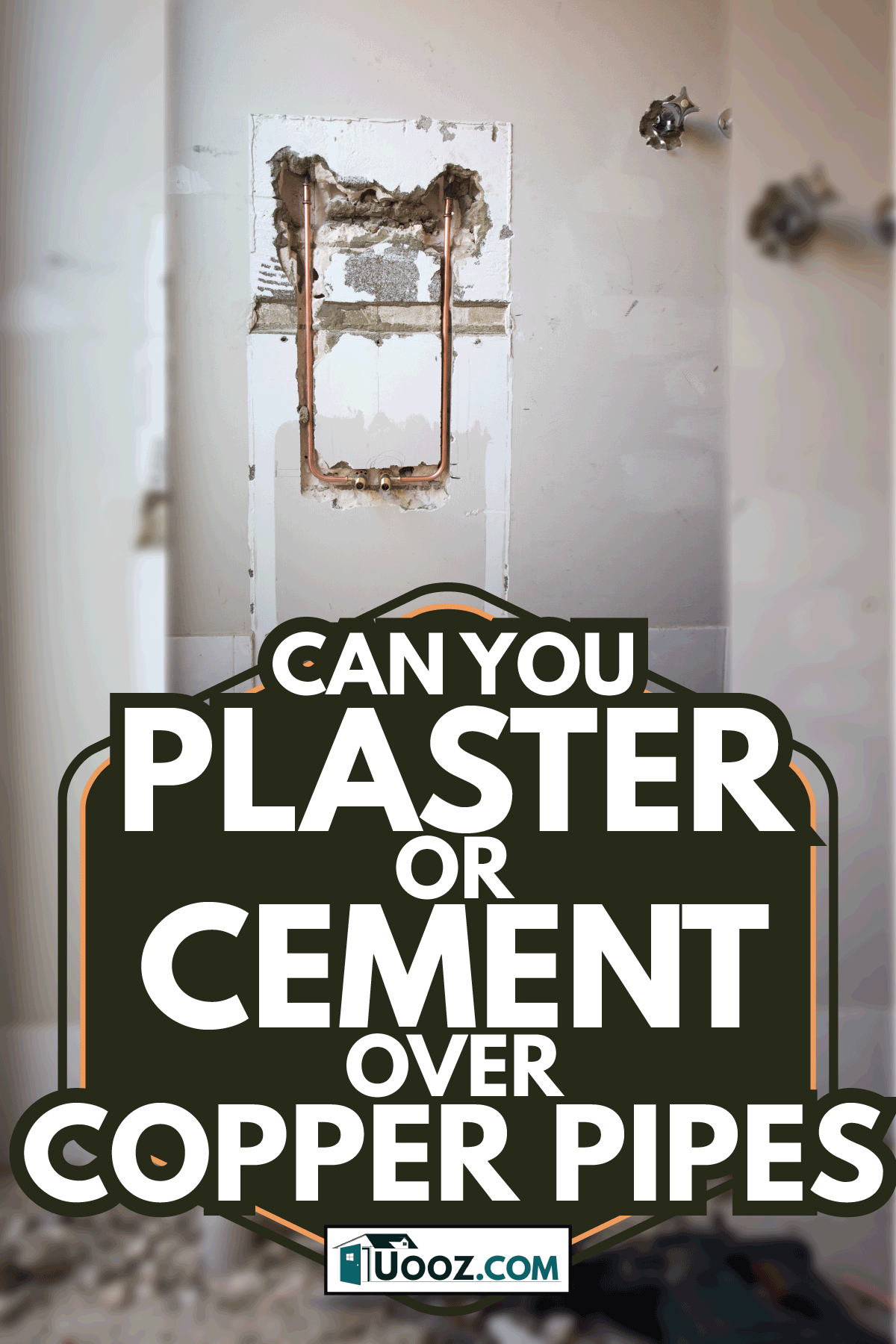
Can you cement over copper pipes?
If you're having some pipework done in your house, you might have heard the words chasing pipes from your plumber. It basically refers to the wall that's being built around the pipes so that they are concealed from one's view. This is why plumbing pipes are usually located behind the walls, floorboards, and ceilings.
The installation of a pipe chase over copper pipes is best left to the professionals, but it still helps to be familiar with everything that's going on. It's your house, after all.
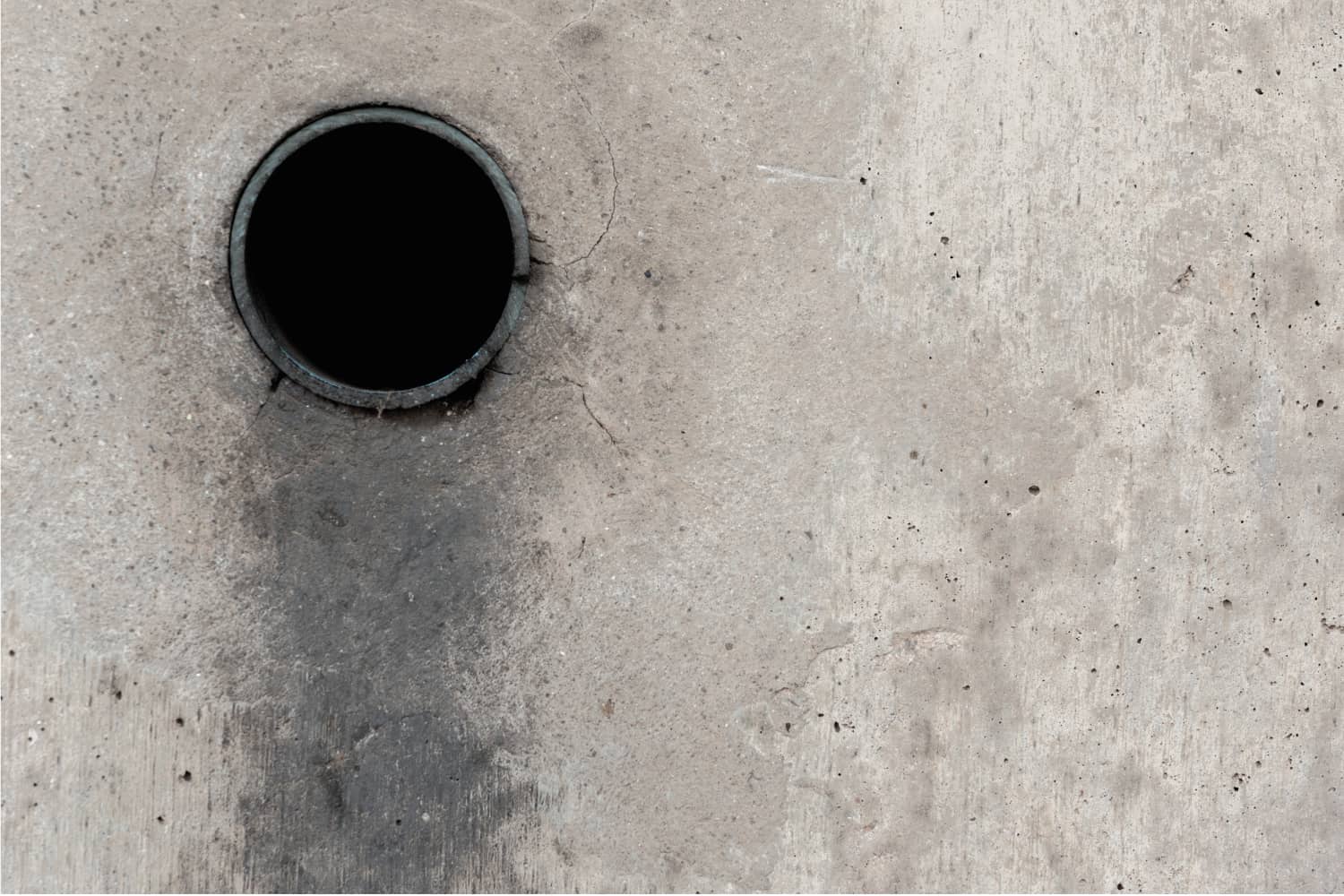
Pipe Chasing
A pipe chase is important because it can influence the performance of your pipes. For example, when it is located in an exterior wall, it can subject the pipes to extreme weather conditions and cause them to freeze during the winter. This can be an issue because the pipes can burst and cause major damage not just to your plumbing but to your home.
Chasing pipes is a technical job. The cut-outs and placement of the pipes should be precise to avoid problems with the wet wall later on. Chases are usually done on walls made of concrete and plaster.
The plumber cuts a horizontal or vertical opening on the wall where the pipes can pass through. Once the pipes are in place, the opening needs to be covered again by cement or plaster to hide them from plain sight.
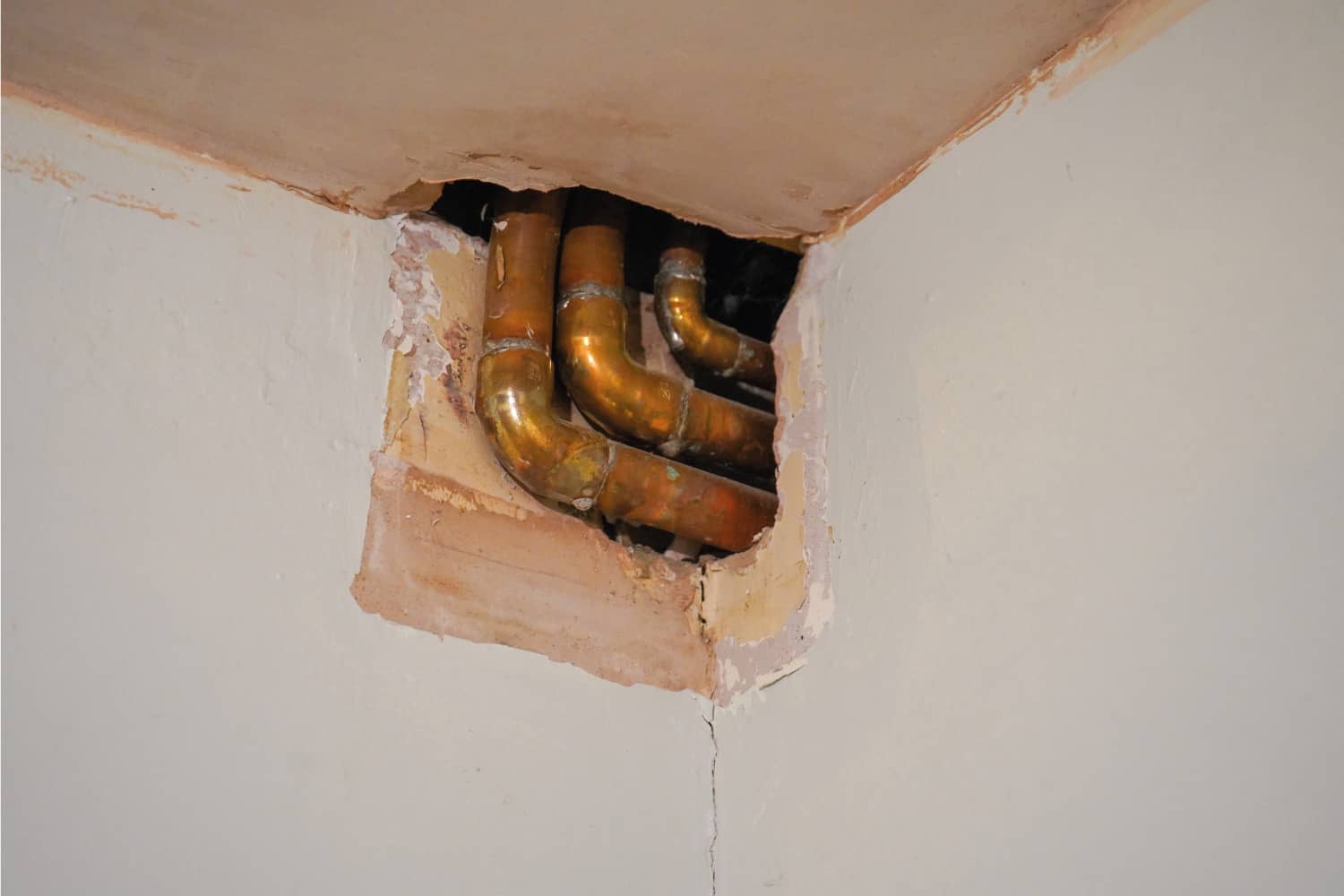
Protecting Covered Pipes
So, this answers the question of whether you can cement or plaster over copper pipes. Yes, you can do so, and this has been common practice among plumbers as the need arises. However, there is a proper way of doing this to protect your copper pipes from corrosion.
Experts discussing this topic in an online forum recommended that you cover your pipes with electrical insulation tape, duct tape, or pipe sleeves so that they are not directly in contact with the cement and plaster.
These tactics will also shield the pipes against cement or plaster as they expand and contract depending on the weather.
Check out this link to find this electrical insulation tape on Amazon.
Does copper corrode in plaster?
Plaster is a construction material that's made from mixing sand or cement with lime and water. It is used over ceilings, walls, partitions, and other structures. What starts as a soft mixture turns to a hard surface upon drying. It is very durable; that's why it is used for various applications in home construction.
As mentioned above, plaster is also used for chasing copper pipes. Previous studies have shown that plaster in itself does not contribute to copper pipe corrosion.
However, the internal walls can become damp over time, which is conducive to corrosion. That's why plumbers still recommend that you put a barrier or protection over your copper pipes when you're covering them with plaster to help prevent corrosion.
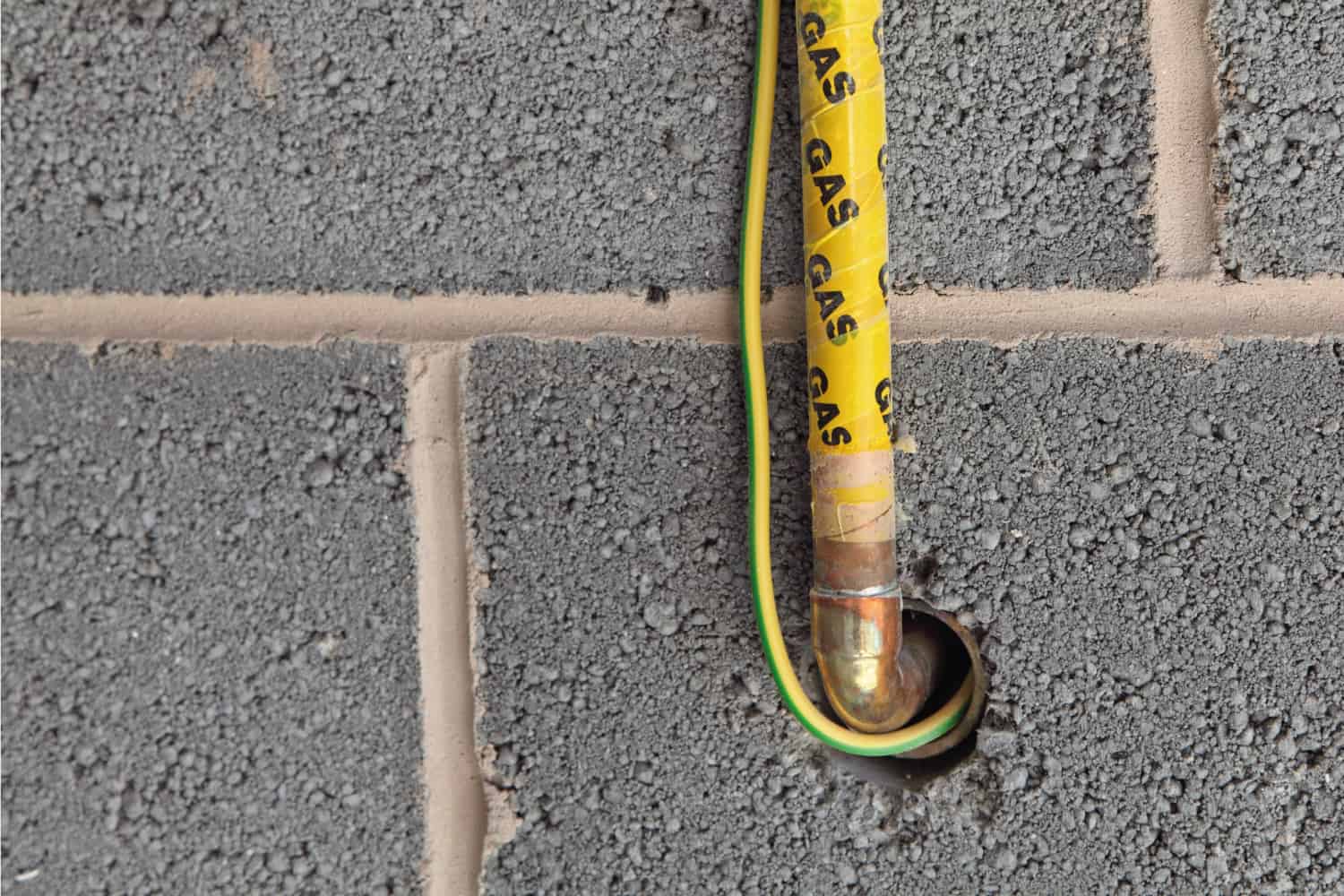
How do you secure a pipe to a wall?
Pipes should be stable and secured to avoid movements when they are in use. These constant movements can put unnecessary stress on the pipes and cause premature wear, tear, and corrosion. Aside from this, they create an irritating noise each time you use your water lines.
That's why you should make sure that your pipes are anchored to the wall. You can fasten them to the surface with the use of pipe clamps which should be placed at regular intervals so that the pipes are supported all the way.
There are pipe clamps that are readily available in the market. You can use them on different surfaces such as wood, concrete, and metal. They also come in various sizes, so you just need to measure your pipe to get the right size.
Once you've purchased the right clamps for your pipes, here's how to install them:
- Position the clamp over the pipe and flush it against the wall. Mark where you should drill the screw holes.
- Put on your safety goggles before you begin drilling.
- Pre-drill the holes.
- Use the appropriate size of the drill bit on your power drill for the screw holes. The depth should be slightly longer than the screws that you'll be using.
- Make sure the holes are properly aligned.
- Install the pipe clamp by screwing them in place.
- Install the rest of the clamps. The ideal interval is one yard apart. You can also put added reinforcement around corners and fittings.
There you have it! You now know how to hold your pipes in place so that they have proper support.
How long do copper pipes last underground?
Copper pipes have always been a popular choice for underground water lines installation. This is because copper is known to have antibacterial properties and strong resistance against corrosion from different types of soils. This metal element is also extremely durable.
Experts say that its lifespan can be around 50 years or more. But there are pieces of evidence that copper used 5,000 years ago is still in existence until now!
However, various environmental conditions can still cause copper pipes to corrode. This can be due to acidic water, dissolved solids, soil composition, direct current flowing through the ground, and faulty installation.
Once corrosion happens, it can lead to pinhole leaks on the pipes, and since they are underground, you would need to call for professional assistance to have them repaired. This can be costly since it involves digging or drilling to be able to reach the pipes. After repairing the pipes, the hole on the concrete or ground also needs to be patched up.
Copper corrosion can happen regardless of the age of your copper pipes. It is important to have the leaks fixed immediately, or else you risk water contamination and foundational damage.
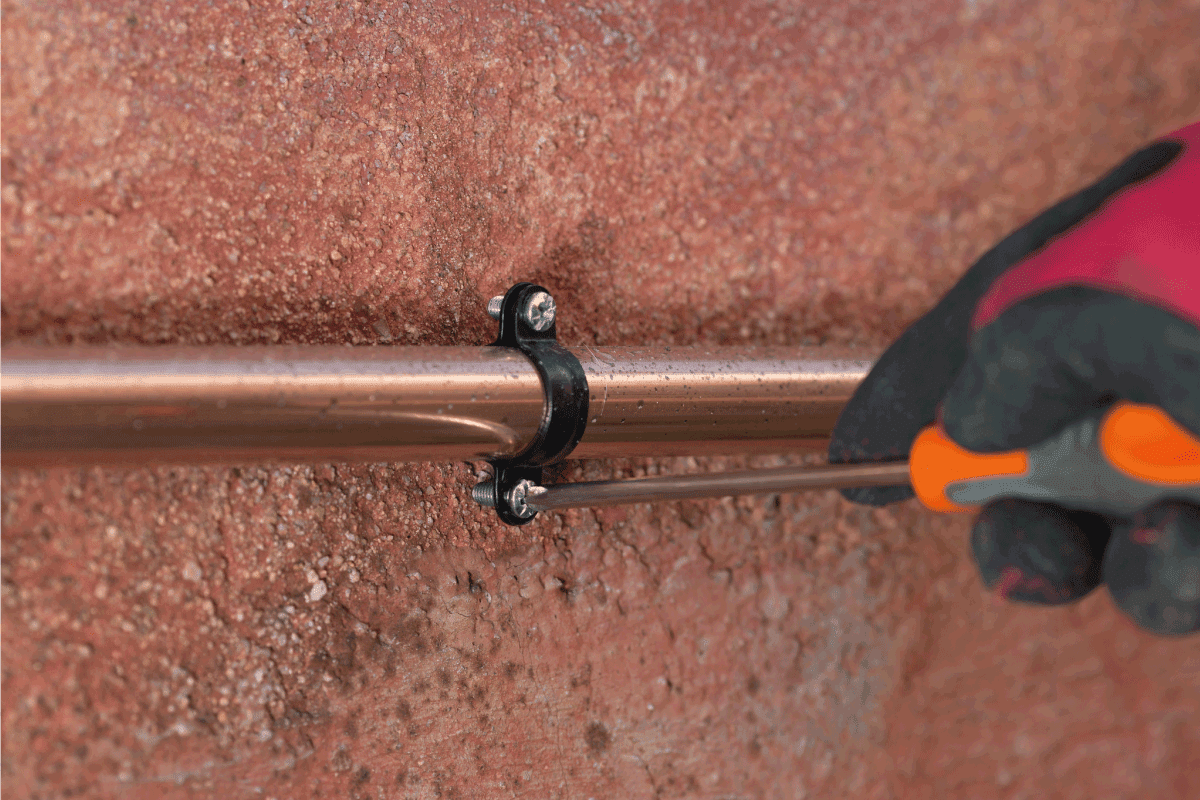
Final Thoughts
Copper pipes are usually encased in plaster or cement to ensure that they serve their purpose while being safely hidden from your view. But it's best if the pipes are covered with tape or sleeves to give them added protection against corrosion. You don't want to give your pipes a reason to be damaged and require costly repairs, do you?
If you want to read more about copper pipes, you may visit the following links:

